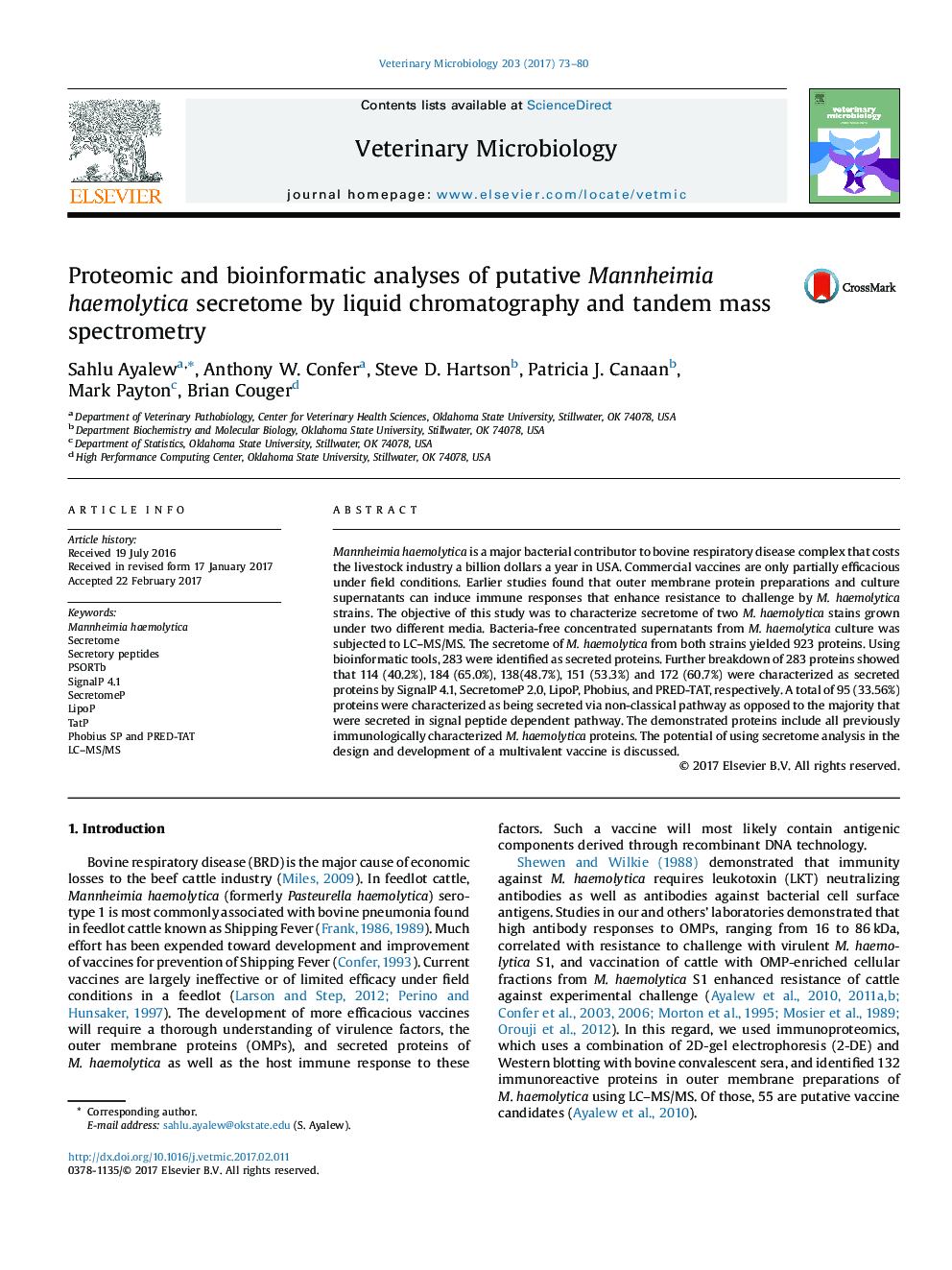| Article ID | Journal | Published Year | Pages | File Type |
|---|---|---|---|---|
| 5545288 | Veterinary Microbiology | 2017 | 8 Pages |
Abstract
Mannheimia haemolytica is a major bacterial contributor to bovine respiratory disease complex that costs the livestock industry a billion dollars a year in USA. Commercial vaccines are only partially efficacious under field conditions. Earlier studies found that outer membrane protein preparations and culture supernatants can induce immune responses that enhance resistance to challenge by M. haemolytica strains. The objective of this study was to characterize secretome of two M. haemolytica stains grown under two different media. Bacteria-free concentrated supernatants from M. haemolytica culture was subjected to LC-MS/MS. The secretome of M. haemolytica from both strains yielded 923 proteins. Using bioinformatic tools, 283 were identified as secreted proteins. Further breakdown of 283 proteins showed that 114 (40.2%), 184 (65.0%), 138(48.7%), 151 (53.3%) and 172 (60.7%) were characterized as secreted proteins by SignalP 4.1, SecretomeP 2.0, LipoP, Phobius, and PRED-TAT, respectively. A total of 95 (33.56%) proteins were characterized as being secreted via non-classical pathway as opposed to the majority that were secreted in signal peptide dependent pathway. The demonstrated proteins include all previously immunologically characterized M. haemolytica proteins. The potential of using secretome analysis in the design and development of a multivalent vaccine is discussed.
Related Topics
Life Sciences
Agricultural and Biological Sciences
Animal Science and Zoology
Authors
Sahlu Ayalew, Anthony W. Confer, Steve D. Hartson, Patricia J. Canaan, Mark Payton, Brian Couger,
